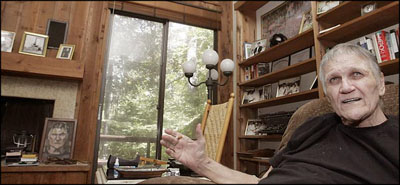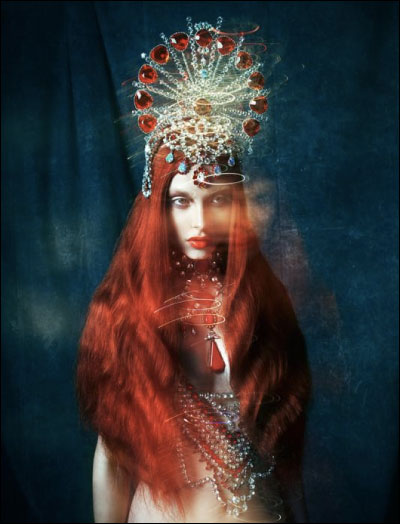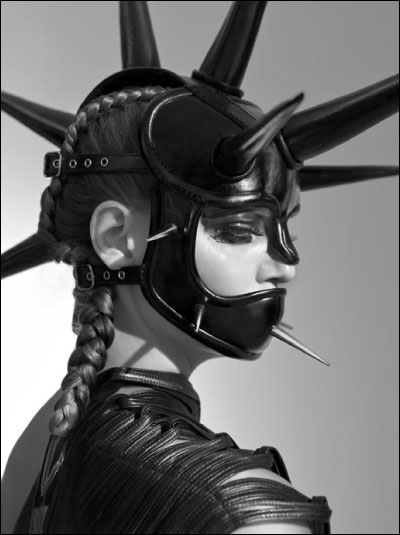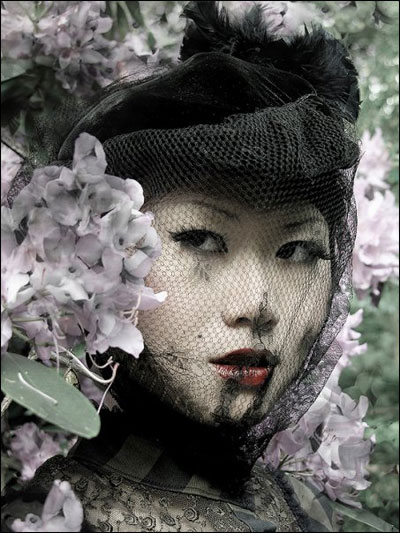They see Gandalf trollin', they hatin'.
Thank you, kid-named-Jav-dressed-like-Gandalf-and-doin’-the-mongo-longboard-thing-for-the-sake-of-a-very-silly-joke. Thank you.
Thank you, kid-named-Jav-dressed-like-Gandalf-and-doin’-the-mongo-longboard-thing-for-the-sake-of-a-very-silly-joke. Thank you.


Author Harry Crews. The tattoo is an excerpt from E. E. Cummings’ poem “Buffalo Bill”. (“How do you like your blue-eyed boy, Mister Death?”)
A great and grizzled powerhouse of American fiction has left us. He was 76 years old. A wild Southern gent with a penchant for heavy drinkin’, Harry Crews wrote like he lived: hard, bloody, sharp, gritty. His ex-wife, Sally Ellis Crews –with whom he remained great friends after they divorced for a second time in 1964– informed the AP on Thursday that Crews had long suffered from neuropathy: “He had been very ill. In a way it was kind of a blessing. He was in a lot of pain.”
Crews wrote beautifully about pain. Speaking about his own books: “The smell of blood is on them […] the sense of mortality is a little too strong.” That may very well be true. But like blood, they are also as rich and vital as all get-out. If you haven’t experienced his world before, but appreciate the output of writers like Cormac McCarthy, Flannery O’Connor, Faulkner or Bukowski, you will likely find loads of gruff and stalwart reassurance in the work of Harry Crews.
A forthcoming memoir by Crews is slated to be published in the near future. Long before his passing, there’d been a lot of talk of reissuing his full bibliography in digital editions and beyond. Here’s hoping.
Visit HarryCrews.org, which features many essays, interviews and portraits. Some sagacious quotes from the hellion below.

Harry Crews. Photo by Oscar Sosa for The New York Times.
“I never wanted to be well-rounded. I do not admire well-rounded people nor their work. So far as I can see, nothing good in the world has ever been done by well-rounded people. The good work is done by people with jagged, broken edges, because those edges cut things and leave an imprint, a design.”
“If you’re gonna write, for God in heaven’s sake, try to get naked. Try to write the truth. Try to get underneath all the sham, all the excuses, all the lies that you’ve been told.”
“Writers spend all their time preoccupied with just the things that their fellow men and women spend their time trying to avoid thinking about. … It takes great courage to look where you have to look, which is in yourself, in your experience, in your relationship with fellow beings, your relationship to the earth, to the spirit or to the first cause—to look at them and make something of them.”
“There is something beautiful about scars of whatever nature. A scar means the hurt is over, the wound is closed and healed, done with.”

Snarkily hilarious (abbreviated) animated version of Dubba Jonny‘s infamous dubstep tutorial piss-take. By TreeHouseCharles.
(WEEB WOB WOB WUGGUDUDDUH WARG WOOB WOB)

In addition to creating several of the most nerve-wracking and suspenseful movies ever made, filmmaker Alfred Hitchcock was an infamously vicious prankster and tormentor of ingenues.
Nevertheless, this has got to be one of the most succinctly and serenely affirming definitions of happiness ever uttered by an artist:
Via Devour
“…you’re looking forward, the road is clear ahead, and now you are going to create something… I think that’s as happy as I would ever want to be.”
Hell yes.

Promo photo for The Birds

Someone working on The Hunger Games really knew what they were doing! As Wired blogger Geeta Dayal points out, hidden in the middle of the film, there’s a rare, beautiful, raw experimental track titled “Sediment”.
The track was recorded by electronic music pioneer and computer scientist Laurie Spiegel in 1972. Appearing during the film’s cornucopia scene, “Sediment” is a 9-minute soundscape created using an ElectroComp 200 analog synthesizer, two tape decks, graphing paper and a ruler. It’s the perfect music for the tense, terrifying moment when the competition truly begins.
“The only way to mix was to play something live, where one deck was playing audio while the other deck was recording the other machine,” Spiegel told Wired in a phone interview. “You piled the tape hiss and noise for every generation you added.” Spiegel recorded the piece in a five-room apartment running on a 15-amp fuse, leading to technical difficulties when her appliances interfered with the recording. “When the refrigerator went on, half the oscillators dropped by a quarter tone…. I had to turn the refrigerator off, or it would ruin the take.”

Laurie Spiegel surrounded by her equipment in the 1970s. Photo by Stan Bratman
[more on Wired, via Geeta Dayal]


While most of Lado Alexi’s photography falls squarely in the realm of traditional, commercial fashion photography, a few of his photos are too magical not to share here. The character in the image above looks like an spellbound Russian princess, while the fetish gladiatrix below resembles a rendering or a sculpture more than a real person.

After the jump, a couple more of Alexi’s stranger photos from the series Fin de Siecle, Amazones, and Astronaut, including a priestess wearing a decrepit doll head, a blue-faced woman wearing Saran wrap, a colorful circus girl, and an astronaut resting in a mysterious room with red lanterns. Overall, the photos might be more compelling if the agency models didn’t all employ the same thousand-yard stare (and, in fact, if some of them weren’t agency models), but the colors are beautiful, the fashion is astonishing, and the makeup is very inspired.
[via Wicked Halo]



Adrienne Rich – a poet, essayist, and activist – died today at age 82 from complications of rheumatoid arthritis. As Margalit Fox wrote in Rich’s New York Times obituary, “triply marginalized — as a woman, a lesbian and a Jew — Ms. Rich was concerned in her poetry, and in her many essays, with identity politics long before the term was coined … She accomplished in verse what Betty Friedan, author of The Feminine Mystique, did in prose.”
Unfortunately, like many other feminists from her era, Rich may have had her own blind spots when it came to gender identity. In The Transsexual Empire, an extremely hateful transphobic text from 1979 by Janice Raymond, she receives special thanks for reading the manuscript through all its stages and providing resources, creative criticism, and encouragement. However, years later, she’s thanked in FTM author Leslie Feinberg’s Transgender Warriors, and in Minnie Bruce Pratt’s S/He. It’s possible that her feelings towards transgender rights evolved, though there are no direct quotes to evidence this.
One of her best works is Diving into the Wreck – a truly weird story told by a lone explorer who goes deep underwater to discover something terrible. There are many interpretations: it’s a story about sex, self, mythos, and/or ego death. There’s a great reading of it by poet Anne Waldman.
Below is the third poem from her series Twenty-One Love Poems:
III
Since we’re not young, weeks have to do time
for years of missing each other. Yet only this odd warp
in time tells me we’re not young.
Did I ever walk the morning streets at twenty,
my limbs streaming with a purer joy?
did I lean from any window over the city
listening for the future
as I listen here with nerves tuned for your ring?
And you, you move toward me with the same tempo.
Your eyes are everlasting, the green spark
of the blue-eyed grass of early summer,
the green-blue wild cress washed by the spring.
At twenty, yes: we thought we’d live forever.
At forty-five, I want to know even our limits.
I touch you knowing we weren’t born tomorrow,
and somehow, each of us will help the other life,
and somewhere, each of us must help the other die.

The hard-picking, war-protesting American folk music legend Earl Scruggs has died, aged 88.


Shien Lee. Styling by Vecona. Photo by Tina Cassati.
New blog alert!
New York-based artist/performer Shien Lee – who you’ll know as the fanciful designer of the anachronistic event Dances of Vice – has launched a new blog, titled “Not Your China Girl.” In Shien’s own words:
The title of the blog was conceived in response to the frequent catcalls I’d get on city streets, which include “China Girl”, “China Doll”, “Konnichiwa”, “Ni hao”, and “Geisha Girl”, among other terms associated with The Asian Mystique. This compelled me to examine the Orientalized and fetishized filter through which Westerners frequently view Asia—and Asian women in particular—which perpetuates a subconscious racism fueled by dehumanizing stereotypes. I wish to challenge the Occidental misperceptions about Asia that are based on mythologies and sexualized for the male imagination.
My aim is not to attack or destroy the fantasy of an exotic, romantic, and beautiful Orient, which many Asians, including myself, can and do appreciate. You’ll find that many of my photos are infused with romanticized Asian imagery; even Asians possess a fantasy of the grandeur of their own history, colored by art, images, and stories passed through time. But can a beautiful thing be detached from the social inferences governed by the male gaze? Yes, and no. To analyze a dream, a fantasy, or thing of beauty calls attention to its flaws, and takes away from its wonderful mystique. Nevertheless, it is imperative to acknowledge and understand the filters that contort our perspectives so that we can see ourselves and the world in which we live more clearly. My goal is to call attention to the issues of race and sex, fantasy and power in representations of Asian culture.
By simultaneously appreciating and examining lavish Orientalist imagery through a feminist lens, Shien tackles an interesting set of issues that often crop up in anachronistic/decadent movements. Within the steampunk subculture, questions are regularly raised about whether or not certain ideals ganked from the Victorian era have reinforced a colonialist narrative. In gothic/industrial spheres, conflicts often flare up around longstanding presumptions regarding whiteness (why has there never been a dark-skinned cover model in 12 years of Gothic Beauty? Why was Side-Line “stunned“, in 2010, by the black lead singer of O. Children?), misogyny (the phenomenon of Combichrist), and supremacism (the racist gray area that begins with Death in June).
Shien clearly cares very deeply about the world that she’s creating for herself and her friends – in the case of Dances of Vice, a world of cinched waists, powdered faces, and themes that reach into a deeply gendered past. Enough to ask: What’s really going on here? How can we be more self-aware about the motifs we’re playing with? So far, the answers involve a romp through 1950s Rockabilly in China, 1920s Deco Japan, and a thoughtful post titled “On the Asian Fetish, Why Asian Women Date White Men, and the Remasculation of the Western Man“. Throw in some gorgeous Pinterest finds, and the blog becomes an addictive mix of analysis, pop culture, fashion, and art.
Congratulations on your new platform, Shien… we’ll be reading!

Here’s one way to find out:
(Via Jesse Kaminsky.)
If, upon surveyance of the above clip, compulsive butt wiggling occurs, you are probably Bat-deficient.
Here’s another test to help determine whether or not you are Batmanemic:

Did you lick the screen? If yes, consult your general practitioner immediately.
This has been a public cervix announcement.
